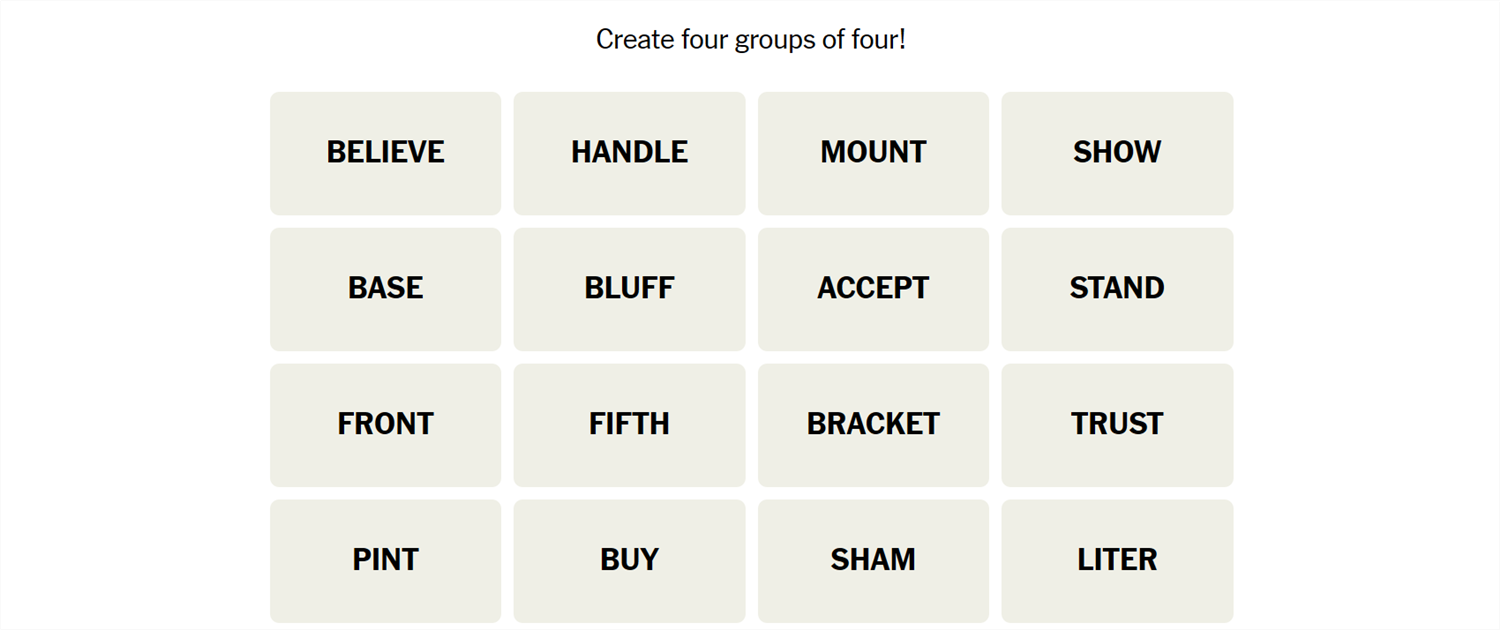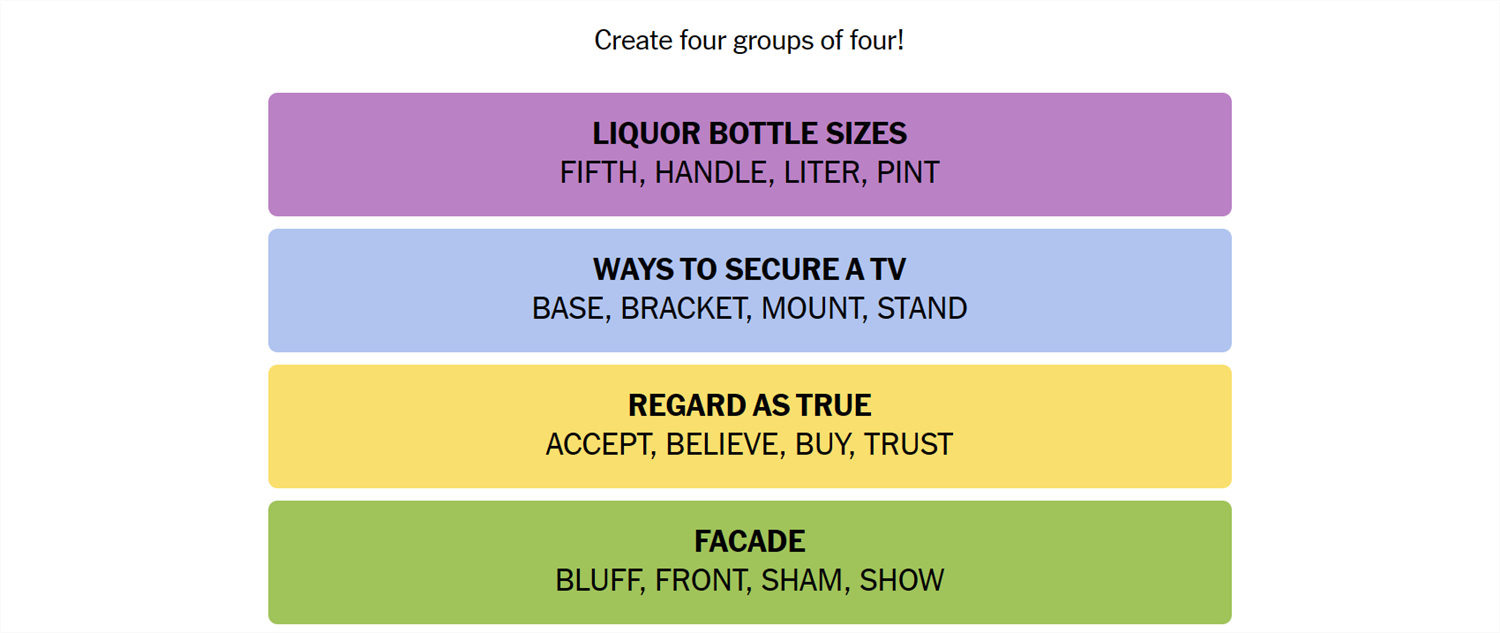Connections is a game from the New York Times that challenges you to find the association between words. It sounds easy, but it isn’t—Connections categories can be almost anything, and they’re usually quite specific. If you need a hand getting the answers, we’ve got you covered.
What Is Connections?
Connections is a game from the New York Times. The objective is simple: sort 16 words into groups of 4. Each group of words will be connected by some common idea or theme. That common element could be anything. We have seen everything from games that rely on the number of letters in the words to categories that require you to spot an extra letter at the end of the word. Sometimes they’re references to economics, other times they reference fairy tales. There is no telling what sort of association there will be between words.
Once you’re confident you understand the connection, select 4 words, then hit “Submit.” You have only four attempts in total, so don’t be too guess-happy.
Hints for Today’s Connections Groups
Here are a few hints for the 400th Connections game to get you started:
- Yellow: When you buy into an idea.
- Green: A false appearance.
- Blue: On the wall, on the table, hung from the ceiling?
- Purple: Alcohol quantities.
If you still need help, the actual group names are:
- Yellow: Regard as True
- Green: Facade
- Blue: Ways to Secure a TV
- Purple: Liquor Bottle Sizes
Today’s NYT Connections Answers
Regard as True (Yellow):
Accept, Believe, Buy, Trust
Facade (Green):
Bluff, Front, Sham, Show
Ways to Secure a TV (Blue):
Base, Bracket, Mount, Stand
Liquor Bottle Sizes (Purple):
Fifth, Handle, Liter, Pint
How Did We Solve This Connections Game?
July 15th wasn’t too hard, even Purple was deceptively straight forward.
The first word I looked at was liter, and that immediately got me thinking about liquid volume. Pint is also a unit of volume, so that seemed like a safe bet. From there, it got a little harder, however. I eventually realized that fifth and handle are also ways to describe quantities of liquid—if you’re talking about liquor, anyway. The Purple group was “Liquor Bottle Sizes.”
Base, bracket, mount, and stand are all ways of attaching or supporting something. In this case, Blue was “Ways to Secure a TV,” though the words work as a group for a ton of other things, too.
Accept, Believe, Buy, and Trust are all words that can mean “To accept as true,” so I just threw them into a group. They were in the Yellow group, which was “Regard as True.”
That left bluff, front, sham, show. The words are all related to some kind of deception, but I couldn’t narrow it down further than that. In this situation, the Connections game didn’t either—Green was literally just “Facade.”
No crazy twists today!
How Do You Guess Connections Groups?
There is no quick, reliable way to approach Connections like there is with Wordle, since Connections isn’t algorithmic. However, there are a few things to keep in mind that can help.
- Look for similar parts of speech. Are some words verbs and others nouns? Are some adjectives? Try mentally grouping them based on those categories and see if any other patterns jump out at you.
- Are the words synonyms? Sometimes categories will just be synonyms for a phrase, or very close to synonyms. Don’t rely too closely on this, though. Occasionally, Connections will deliberately throw in words that are sometimes synonyms to mislead you.
- Try saying the words. Sometimes, saying the words helps. One puzzle we saw included the words go, rate, faster, clip, pace, speed, move, commute, and hurry—all of which are obviously related to the idea of motion. However, when you say them, it becomes a little more obvious that only four (go, move, hurry, faster) are things you’d actually say to prompt someone to get moving.
- Expect the red herring. Connections usually has words that could be plausibly, yet incorrectly, grouped together. Take the words Bud, Corona, and Light, as an example. You might instinctively see those three words together and assume they’re lumped together in a category related to beer—but they weren’t.
- Look for distinct words. If a word on your board doesn’t have multiple meanings or can really only be used in one context, try using that word as the basis for a category.
- Shuffle the board. Sometimes, moving words around will help you look at them in new ways.
If you didn’t solve this one, don’t feel too bad—there’s always tomorrow! And those words may align with a topic you’re interested in, giving you a leg up on the competition.






